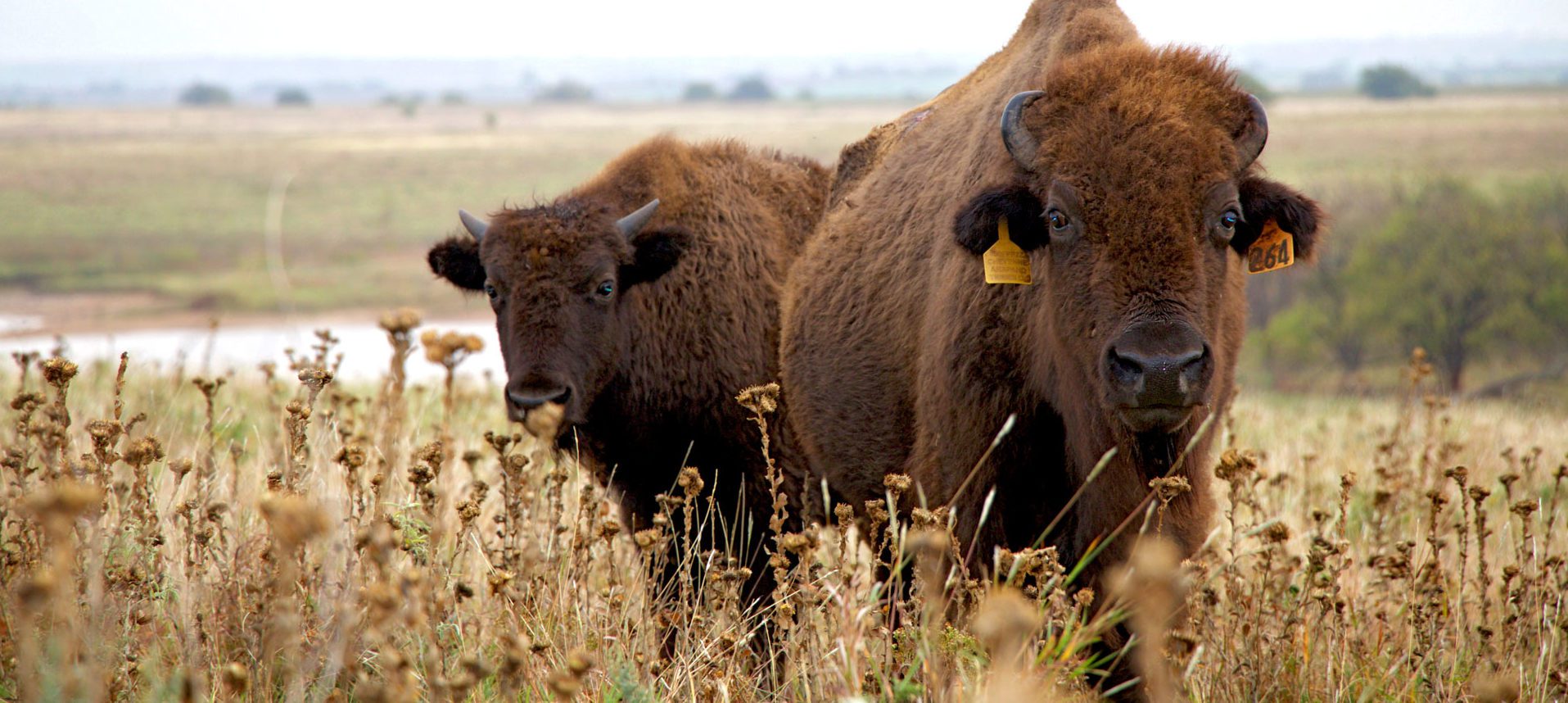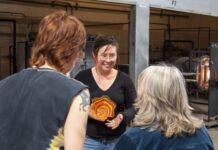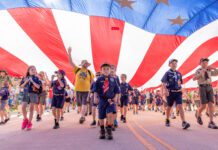Herds of bison have repeatedly disappeared from grasslands occupied by the Choctaw people, says Ian Thompson, director of historic preservation for the tribe. But the majestic creatures have returned to Oklahoma and are cared for by tribal nations, park stewards and people such as Thompson, who have their own herds.
Thompson recounts the history of bison in the Choctaw ancestral homelands in Mississippi, and in southeast Oklahoma where tribal members were driven.
“Bison were in Mississippi in the Ice Age and shortly thereafter,” he says.
Centuries later, when the Europeans arrived, “the Native American population crashed,” he says.
With decreased hunting pressure on the bison in the colonized areas, the animals expanded their range along the Atlantic and to the Gulf Coast.
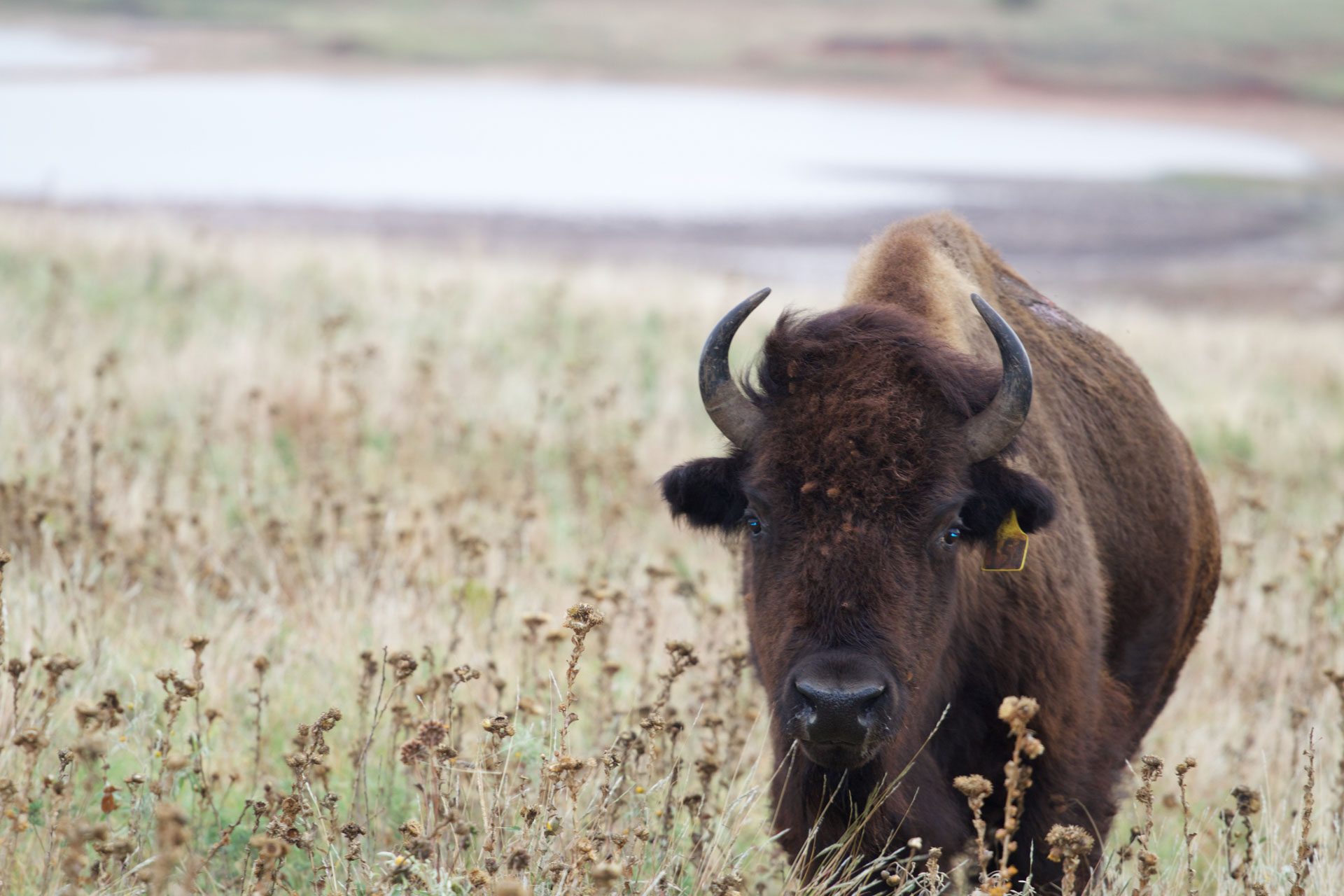

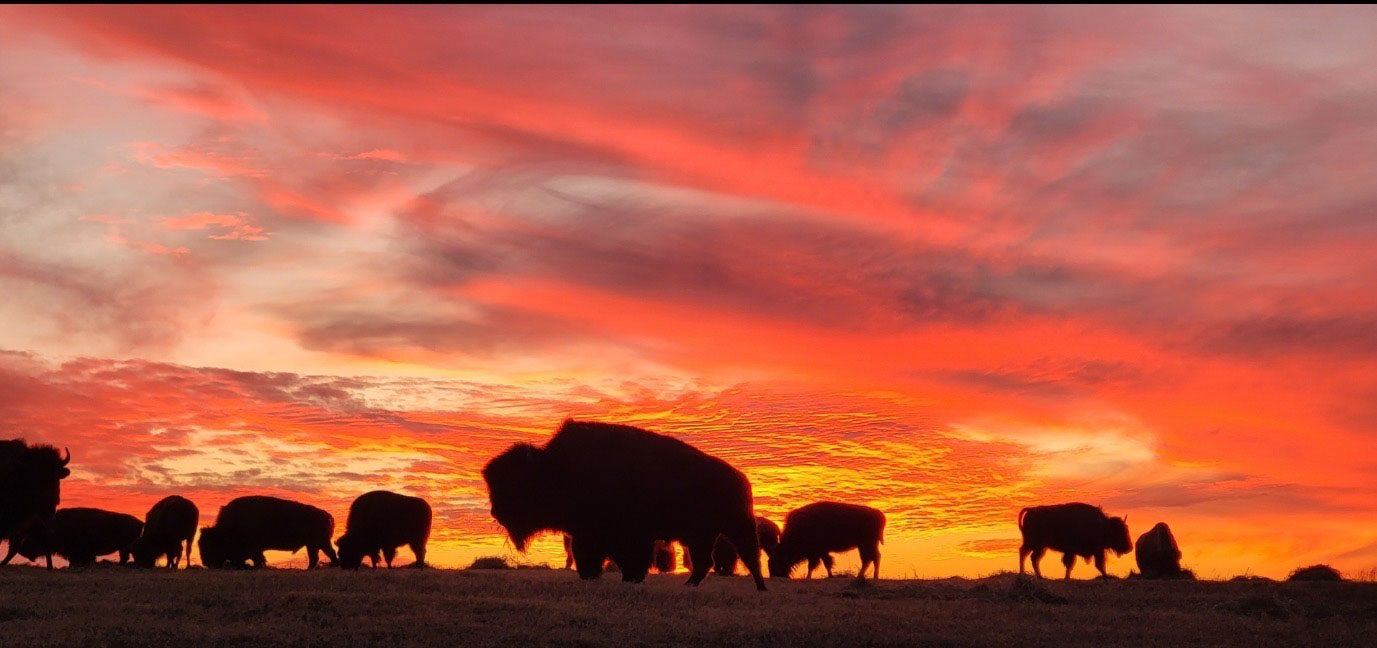

“So, the bison were back in Mississippi, and the Choctaw community adapted to them,” says Thompson. But not for long.
The bison disappeared from Choctaw ancestral lands in the 1740s due to expanding hunting pressure and habitat destruction.
“They were gone from Mississippi by the time of the Trail of Tears,” he says. “But Choctaw hunters who had gone west knew they were in Arkansas, Oklahoma and present-day Texas. There were still bison in Oklahoma when they came on the Trail of Tears, but they were gone from southeast Oklahoma by the mid-1800s.”
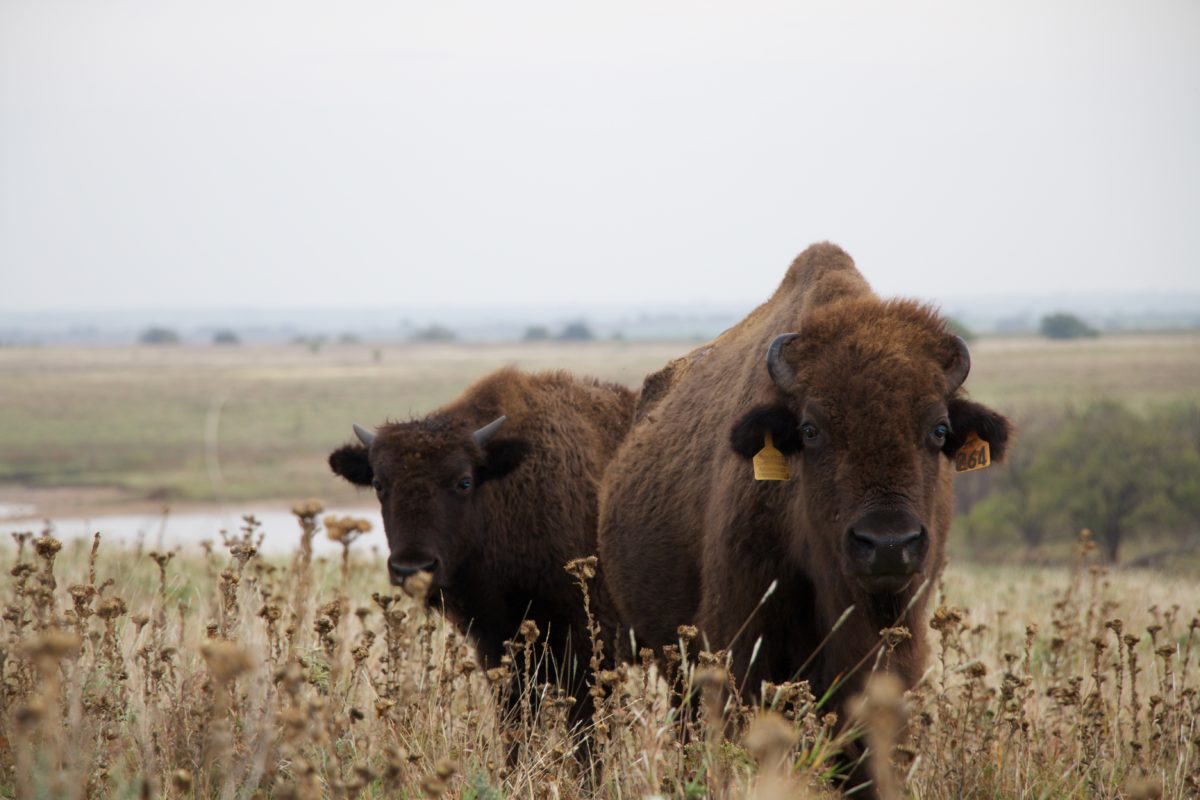
In 2012, Thompson and his wife, Amy, bought a bull and two cows during the annual sale of the Oklahoma Bison Association. They now have 13 head, a number that balances the ecology of their farm near Antlers.
“I had dreamed of raising bison since I was a teenager,” says Thompson, who became interested in his Choctaw culture at age 7 in his native Kansas City.
Dusty Baker, owner of Cross Timbers Bison near Sulphur, fell in love with the animals while working a summer job at the Chickasaw National Recreation Area. As a student at Oklahoma State University, he wrote a paper on the near-extinction of the species in the late 1800s, and learned about how bison today are helping to restore over-grazed land.
Baker bought his first five bison in 2018 and now has about 40 head. He and his wife, Marisa, sell bison meat and bison-themed merchandise on their website.
“I might not be a Native American, but we can continue the growth of the bison and consume its healthiness,” he says. “I appreciate our Native American heritage, and they are awesome animals. Why not bring them back to where they roamed?”
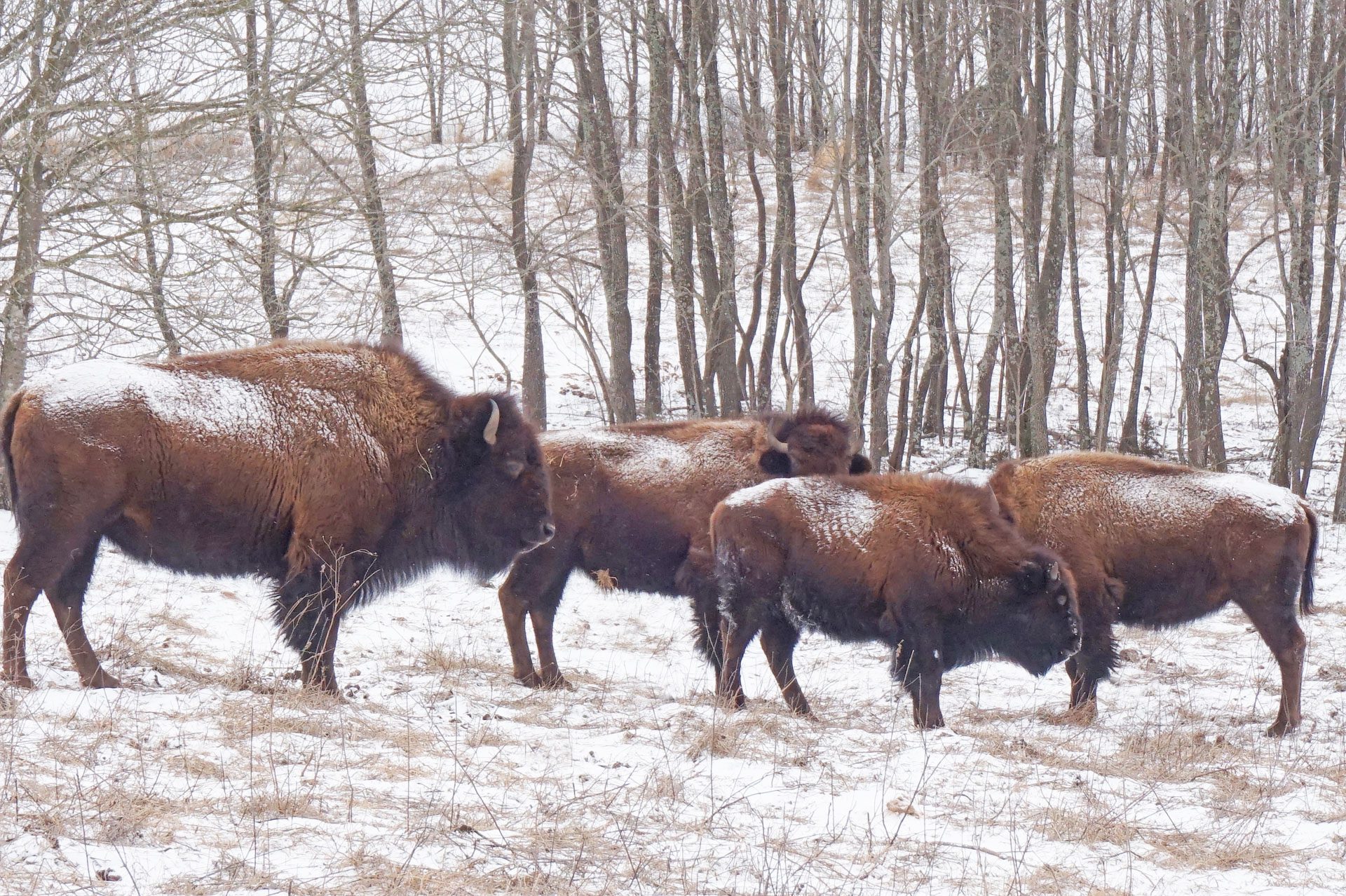

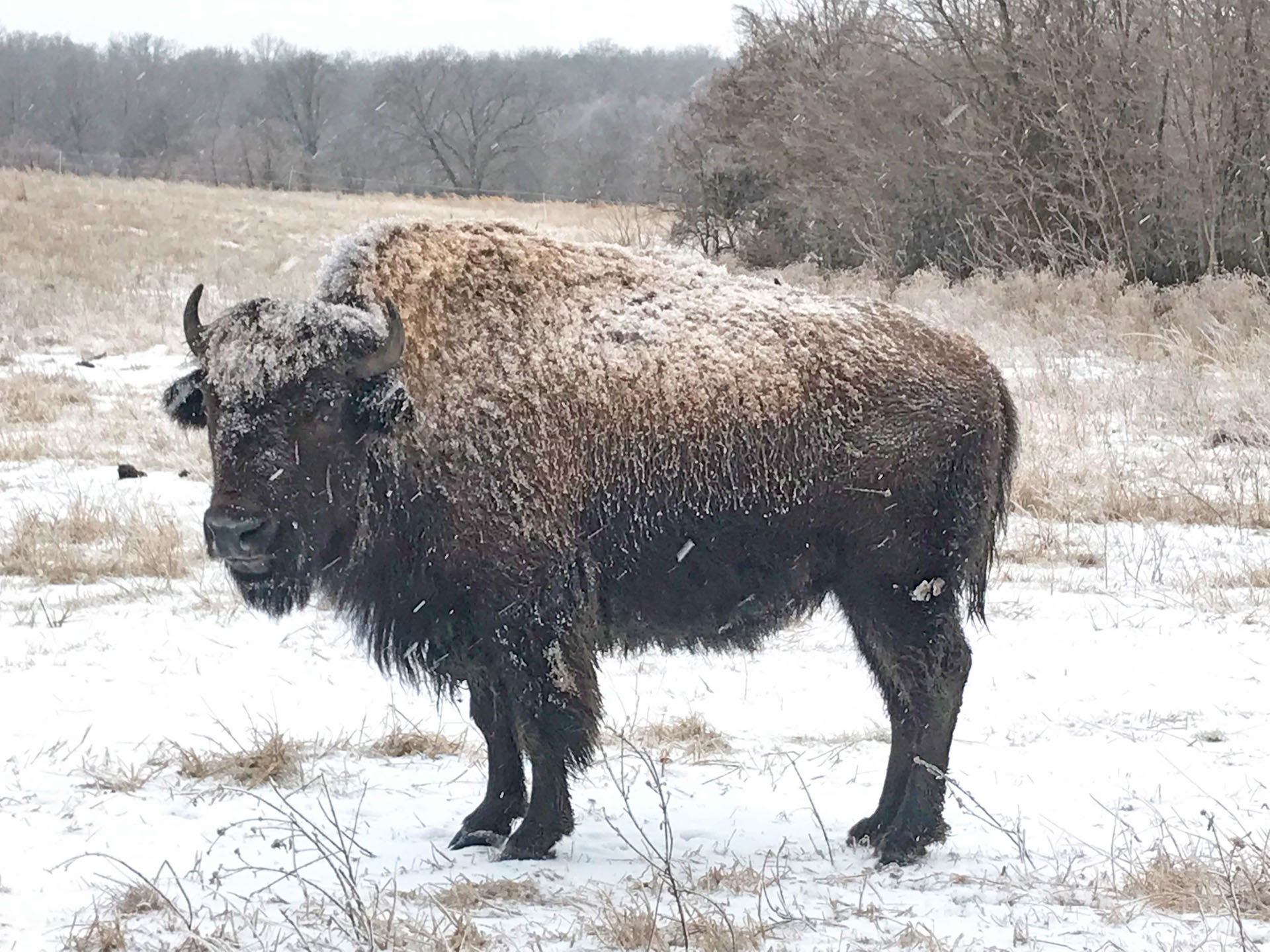
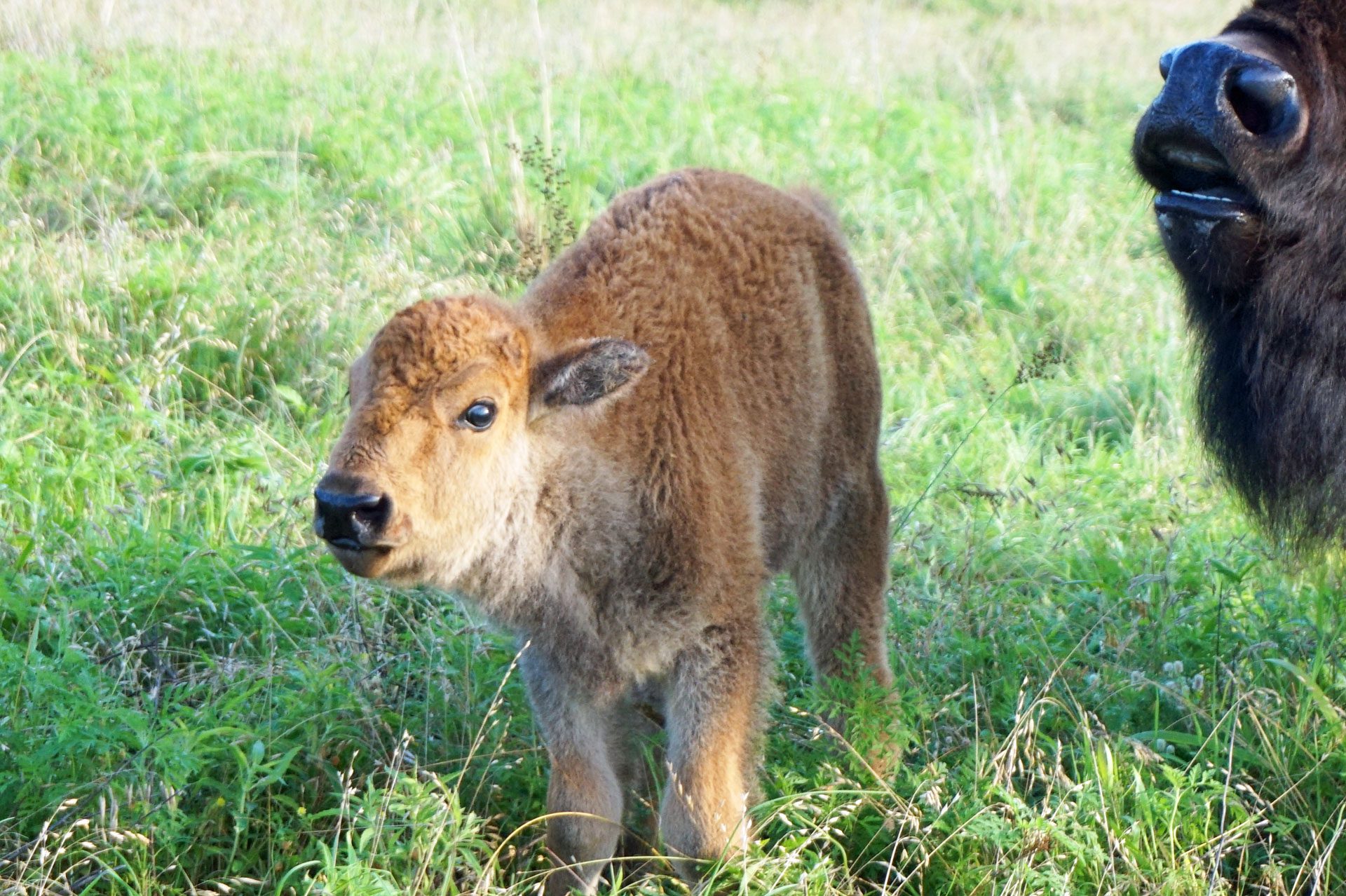
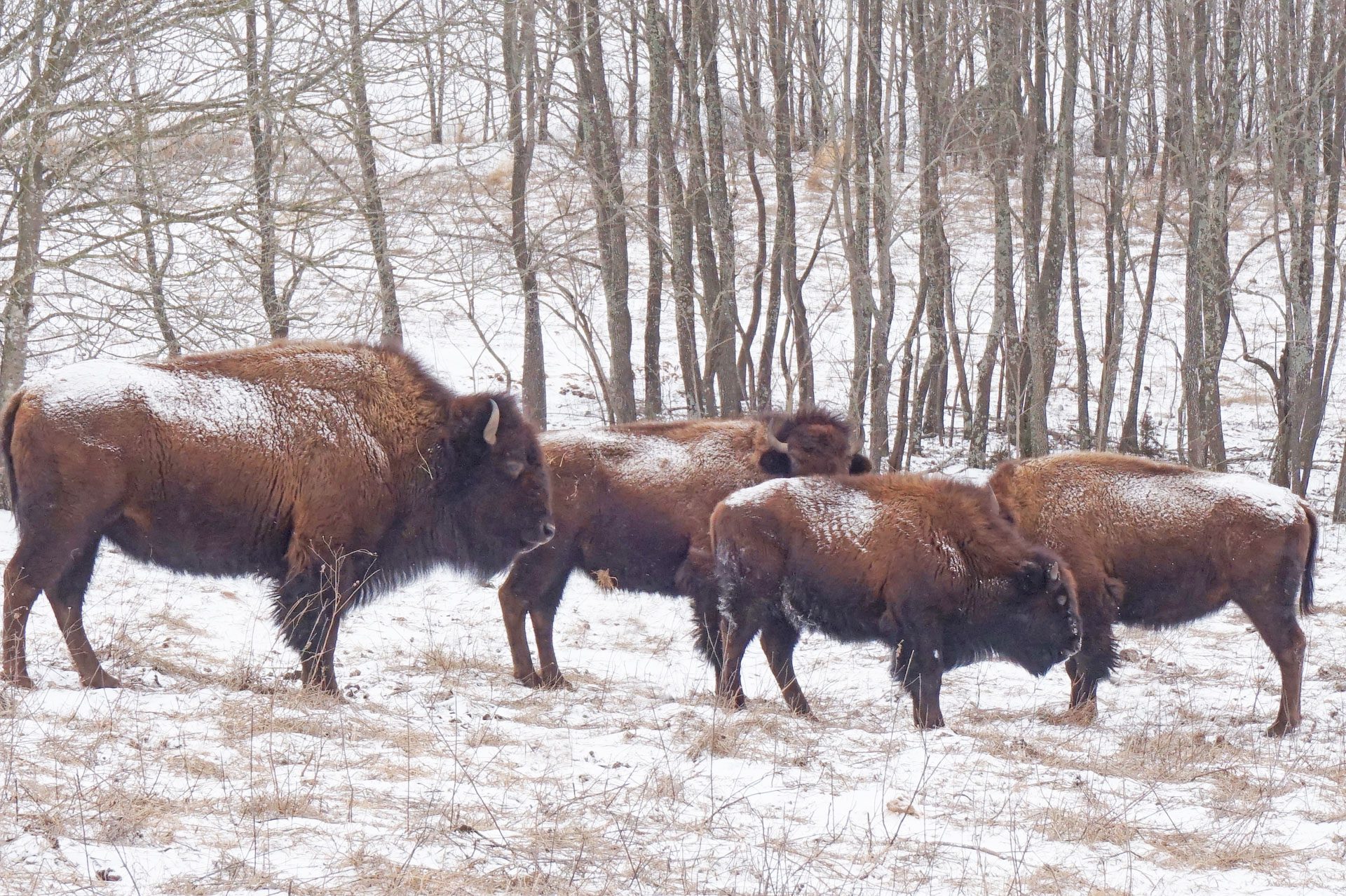

How Bison Help the Environment
Bison, Thompson says, “are a keystone species to the Plains. The native ecosystem doesn’t work right without them.”
When bison eat down the grass, it allows native wildflowers and other species to thrive. Bison shed wool, which gets used for bird nests. They also carry seeds in their wool coats, which can distribute plants over a large area.
“Cedar trees are invasive, and bison love to destroy cedar trees,” says Thompson. “They are engineers for the prairie.”
The Thompsons rotate their herd between 23 pastures, and in the six years they have practiced rotational grazing, 207 native prairie species have returned.
The couple sells some meat, but give away a lot of it. The most flavorful comes from a 2-year-old male, which yields about 400 pounds of meat.
“I’m happy to live with the buffalo,” says Amy, whose ancestors came on the Trail of Tears. Her father is full-blood Choctaw and a first-language speaker, and her mother is Creek/Seminole and Chickasaw.
She likes to watch the bison at play.
“They do this thing we call pogo-sticking where they jump around on four straight legs,” says Ian.
And bison have a pecking order, he says.
“The top cows lead the herd. If you open the gate, and the pasture maybe hasn’t been grazed for 90 days, the top cows get to eat the good stuff first.”
But bison are not pets in the traditional sense.
“You are not going to be able to hug them,” says Baker, a former history teacher. “But they know that you care if you are taking care of them. They honor that and give it back to you just by keeping you safe when you do go to handle them.”
Baker and his bison have unwittingly become social media stars since he started creating “day-in-the-life” videos in 2019. He now has 136,000 followers on his YouTube channel and 118,000 on Facebook.
Oklahoma Bison Association
The restoration of bison to Oklahoma and other states “has been a healing process for the bison and to the people who relied on them,” says Rob Burkybile, second chief of the Miami-based Modoc Nation.
The Modoc, who have a herd of about 275, are members of the Intertribal Buffalo Council, which is based in Rapid City, S.D., and works to introduce bison to areas that have not had them for a while.
The Modoc and at least half a dozen other Oklahoma tribes have bison herds, sometimes obtained through agreements between the ITBC and the National Park Service. In December, ITBC grant funds brought about 30 bison from Yellowstone National Park to the Modoc ranches.
Ian Thompson is president of the Oklahoma Bison Association, which holds an annual sale and a summer social and provides mentoring opportunities for its members. Some OBA members are tribal caretakers, but most are private ranchers whose herd sizes run the gamut from a few to one in western Oklahoma that has 600 bison, Thompson says.






















